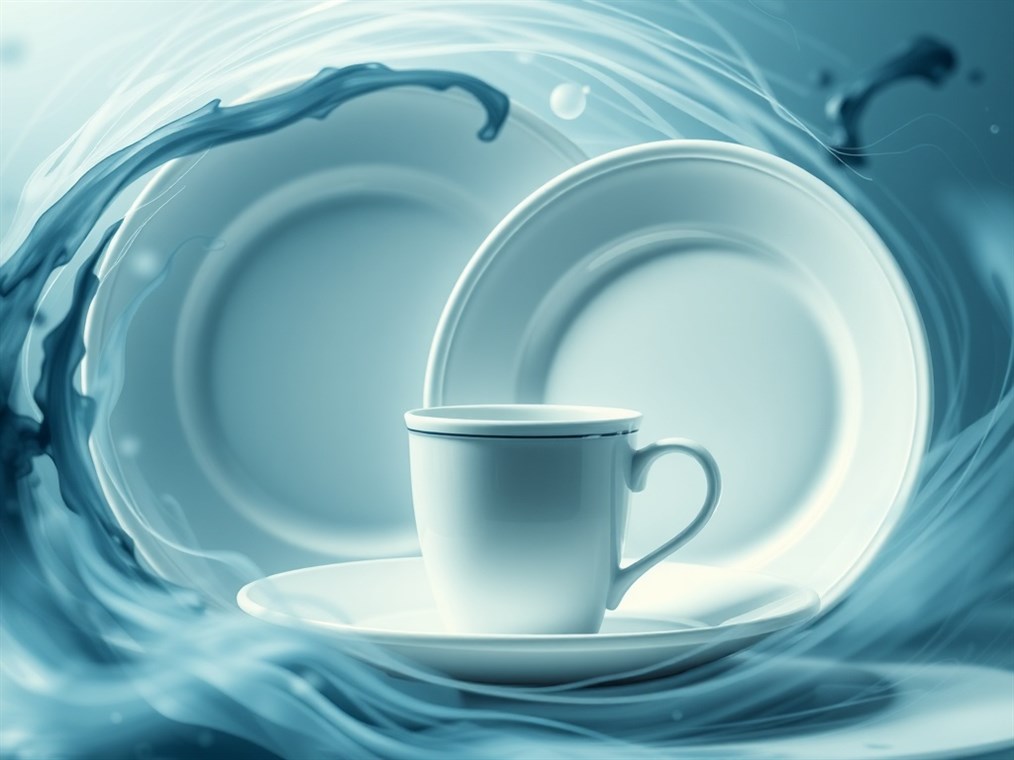Is Your Porcelain Dinnerware Secretly Spicing Up Your Food? (And Not in a Good Way)
Porcelain dinnerware. It’s elegant, it’s classic, and a lot of us have it in our homes. But have you ever stopped to wonder if those pretty plates and mugs might be adding something extra to your meals…something you definitely didn’t order? I’m talking about the possibility of harmful substances leaching into your food. As someone who’s spent years digging into food safety and the nitty-gritty of materials science, I’ve done the research, and I’m here to break it down for you in plain English.
First things first, what is porcelain, anyway? Well, it’s basically a super-refined type of ceramic. Think of it as clay that’s been to finishing school. It’s made from a special clay called kaolin, mixed with stuff like quartz and feldspar. Then, it gets baked at crazy-high temperatures – we’re talking hotter than your pizza oven could ever dream of! This intense heat transforms the mixture into a dense, non-porous material that’s often beautifully translucent.
Okay, so where does the “leaching” part come in? Here’s the thing: the big worry with porcelain, and really any ceramic dishware, is the potential for heavy metals like lead and cadmium to sneak into your food. Back in the day, lead was often used in glazes to give them that smooth, shiny look and to make colors pop. Cadmium, on the other hand, was a go-to for creating vibrant colored pigments. The problem? If the glaze isn’t mixed just right or fired at a high enough temperature, these metals can leach out, especially when they come into contact with acidic foods. Think tomato sauce, lemon vinaigrette…anything with a bit of zing.
Now, why should you care? Let’s get real for a second.
Lead is seriously bad news, especially for kids. It can mess with their development, cause learning disabilities, and even lower their IQ. And the scary part? Experts agree there’s no truly “safe” level of lead exposure. Cadmium isn’t exactly a health food either. Too much of it can wreak havoc on your liver, heart, and kidneys. Long-term exposure, even to small amounts, can leave you feeling exhausted, give you headaches, and mess with your nervous system. No thanks!
Thankfully, there’s some good news here. Regulations have come a long way in reducing the risk of lead and cadmium leaching from modern porcelain. The FDA started keeping an eye on lead levels in dishes way back in 1971, and they’ve been tightening the rules ever since. These days, they set strict limits on how much leachable lead is allowed. Plus, many manufacturers, particularly in the US and Europe, have ditched lead and cadmium in their glazes altogether. When you’re shopping, keep an eye out for dinnerware that’s labeled “lead-free” or “cadmium-free.” It’s worth the extra peace of mind.
But before you breathe a sigh of relief, it’s important to realize that some risks still linger, especially when it comes to older or imported porcelain.
Got some vintage china handed down from Grandma? Those dishes might predate the stricter regulations and could contain lead-based glazes that leach harmful levels of heavy metals. It’s best to be cautious with antique or vintage pieces, especially if the glaze looks worn or damaged. And what about that cute little bowl you picked up on vacation? Products from countries with less strict regulations could pose a higher risk. Always buy from trusted sources and look for certifications.
Also, take a good, hard look at your dishes. See any cracks, chips, or signs of corrosion in the glaze? That damage can make leaching more likely. When in doubt, toss it out! And a word to the wise: be extra careful with old, brightly colored pottery, especially if it’s yellow, red, or orange. Those colors often relied on lead to achieve their vibrant hues.
So, what can you do to keep yourself and your family safe? Here are a few simple guidelines to follow:
- Go Modern: When you’re buying new dinnerware, stick with modern pieces that are labeled lead-free and cadmium-free and meet current safety standards.
- Inspect Those Antiques: If you’re using vintage porcelain, give it a thorough check for any damage that could increase the risk of leaching.
- Easy on the Acid: Limit how often you serve highly acidic foods on older porcelain.
- Microwave with Caution: Don’t microwave porcelain that has cracks or chips. The heat can speed up leaching.
- Handwash with Love: Even if your porcelain is dishwasher-safe, hand washing is a gentler option, especially for delicate or vintage pieces. Harsh detergents can wear down the surface over time.
- Test It Out: You can buy home lead test kits at most hardware stores or online. They’re a simple way to check if your dishes are leaching lead.
- Look for the Seal of Approval: Check for certifications from reputable organizations that test for food safety.
- Trust the Brands You Know: Buy porcelain from well-known brands that have a solid reputation for quality and safety.
If you’re really concerned, you can even get your dishes professionally tested. There are fancy gadgets called XRF analyzers that can measure lead content without damaging your dishes. And labs can run special leach tests to see exactly how much lead is escaping.
There’s also a simple lemon juice test you can do at home. Just squeeze some lemon juice onto a glazed surface, leave a lemon slice on top overnight, and rinse it off in the morning. If you notice any changes in the color of the glaze, it could be a sign that the acid in the lemon juice leached something out.
The bottom line? While there’s always some potential for leaching, modern porcelain dinnerware is generally safe to use. By taking a few simple precautions, choosing wisely, and keeping an eye out for damage, you can enjoy your meals without worrying about unwanted extras ending up on your plate. Bon appétit!

